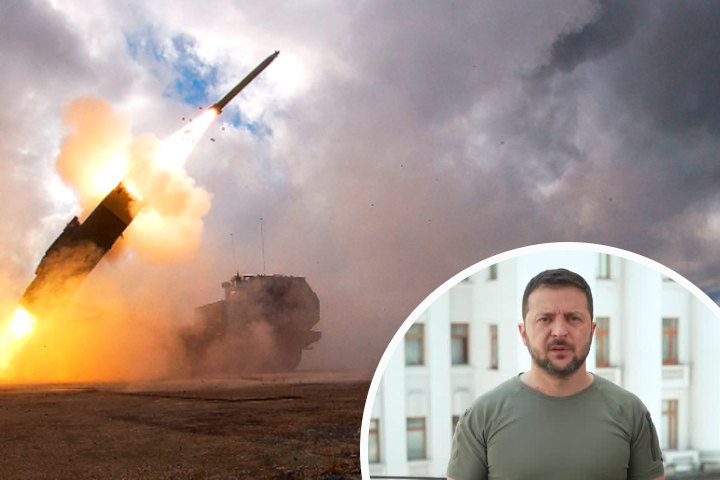


On Tuesday, Ukrainian forces launched long-range ballistic missiles supplied by the United States, known as the MGM-140 Army Tactical Missile System (ATACMS), for the first time, attacking Russian positions in eastern Ukraine.
In an address delivered Tuesday evening, Ukrainian President Volodymyr Zelenskyy thanked the US personally for sending the ATACMS missiles.
“Today I am especially grateful to the United States. Our agreements with [President Joe Biden] are being implemented, and they are being implemented very accurately. The ATACMS have proven themselves,” Mr. Zelenskyy said.
According to Russian official media, one alleged ATACMS missile targeted Skadovsk, wounding two people, while a second suspected ATACMS strike hit Berdyansk. The attacks and weapons used could not be independently confirmed.
Skadovsk is in the Kherson area, and Berdyansk is in the Zaporizhzhia region, both of which are Ukrainian territory that Russia took control of last year after holding an annexation referendum.
Berdyansk is located dozens of kilometers from the frontline along the Sea of Azov. Nonetheless, the Ukrainian military said on Tuesday that it carried out an attack over this Russian-controlled region, claiming that its troops destroyed numerous helicopters, an air defense missile system, various other specialized vehicles, and ammo stores in Berdyansk. The Ukrainian military did not say how the long-range strike was carried out.
Mr. Zelenskyy's remarks during the Tuesday night talk are the first formal confirmation that the US has given Ukrainian military with long-range ATACMS ballistic missiles.
Ukrainian military have been requesting the ATACMS for months, but the Biden administration has been reluctant to officially accept such shipments. On September 21, Mr. Zelenskyy arrived in the United States for a visit, and the ATACMS problem came up again.
When asked about the weapons during a press briefing on September 21, national security adviser Jake Sullivan said President Biden had considered the request but "determined that he would not provide ATACMS." Despite Mr. Sullivan's public denial, NBC reported the next day, citing unnamed US officials, that President Biden had agreed to begin supplying the missile system to Ukraine.
In following news appearances, US military officials avoided explicitly acknowledging the reported ATACMS transfers. Even as recently as Oct. 5, Pentagon press secretary Brig. Gen. Pat Ryder delayed making a declaration regarding the purported ATACMS movements.
The Biden administration has approved the supply of a number of military equipment to Ukraine, including artillery, tanks, drones, and fighter planes, but in those situations, the announcements for the transfers predated their arrival and usage on the battlefield. The Biden administration only confirmed the delivery after Ukrainian forces had already used it against Russian targets.
“The United States recently provided Ukraine with a type of ATACMS capable of ranging out to 165 km as part of our ongoing support for the people of Ukraine as they defend their territory against Russia’s brutal invasion,” White House National Security Council spokesperson Adrienne Watson told CNN on Tuesday. “We believe this will provide a significant boost to Ukraine’s battlefield capabilities without risking our military readiness.”
One probable explanation for the Biden administration's delay in transferring ATACMS to Ukraine is a fear of expanding the Russia-Ukraine crisis into a larger confrontation.
Some ATACMS models have a range of more than 300 km (about 190 miles), enhancing the likelihood of Ukrainian operators shooting the missiles well inside Russia. By arming Ukraine with shorter-range models that can only shoot 165 km (about 100 miles), the Biden administration may seek to provide Ukraine with a formidable precision weapon while soothing some fears about the war expanding.